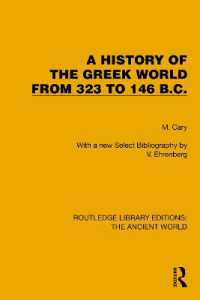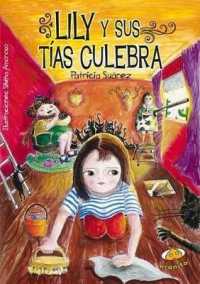Full Description
The first complete translation of the Bible into English was produced by the followers of John Wyclif in the last quarter of the fourteenth century; it is known in two versions, very literal and more idiomatic, and, despite being banned within 25 years of its completion, survives today, complete or partial, in around 250 copies. The organization of the enterprise almost certainly was initiated in Oxford, and reflects in many ways contemporary scholarly interests.
The gospel commentaries of the present study represent a spin-off from the processes of translation: they use the literal text, and attach to it English translations of patristic and later biblical exegesis. The book considers the background to the copies that survive, the precise sources that lie behind the vernacular, and the ways in which older texts were scrutinized and modified to fit a later medieval audience; a section looks at the uses that, so far, have been traced.
No part of the commentaries has so far been printed: this study concludes with some extracts from all sections of the compilation, chosen to amplify the claims of the discussion and to illustrate the commentaries' varied methods.
Contents
List of Plates
Preface
List of Abbreviations
1 Introduction
2 Description of the manuscripts
3 Biblical text, its layout and its origin
4 The commentaries, their texts, basis, sources and methods
(a) Long Matthew, þe firste exposicioun
(b) The commentaries dependent on Catena aurea:
(i) short Matthew
(ii) long Luke, short Luke
(iii) short John
(iv) short Mark
(c) The York text and its relation to the texts in (a) and (b); its evidence for the existence of long versions of Mark and John, and for a long version of Matthew dependent on Catena aurea.
5 The 'topics' in York and the other commentaries, their makeup and sources.
6 The uses made of the commentaries in other texts.
7 Conclusions, suggestions and questions
(a) The Prologues and Epilogue
(b) Editing the commentaries
(c) Lollard texts?
(d) Translation or translations?
(e) Processes of compilation
(f) Related texts?
(g) Origins of the commentaries, date, place, context.
Texts: extracts from the commentaries: brief explanation of editorial method
1.(a) Matthew 11:12-15 from A and from Ad
(b) Matthew 22:1-3 from AL and Y
(c) Matthew 23:29-31 from A and from Ad
2.(a) Luke 10:1-7 from K and from B
(b) Luke 12:1-3 from K and from B
3.(a) John 6:1-7 from B and from Y
4.(a) Mark 4:13-20 from Ad
(b) Mark 8:1-9 from Ad and from Y
(c) Mark 12:38-44 from Ad
5. (a) Matthew 4:1-8 from Y
(b) passages from Abbeville in Y and in Ad
6. Topics
(a) De sacramento altaris from AL and CUL Ff.6.31
(b) De confessione (extract) from K and Y
(c) De officiis prelatorum (extract) from Y and B
7. Odo
(a) attached to Mark 10:31 from Ad
(b) attached to sermon on 9 Trinity in Y
(c) in sermon for 2 Advent from Y, and attached to Mark 16:21-7 from Ad
Appendixes
(a) The problems of using modern editions of three Latin sources for the English commentaries.
(b) The structure and coverage of Odo of Chateauroux in Oxford MS Balliol College 37.
Bibliography
Index








